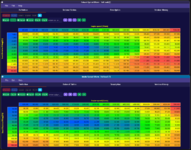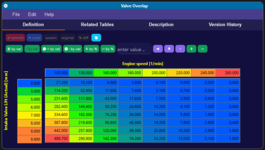I've been tuning for a small amount of time 700 ish revisions on my own car as I continue to learn and I'm ready to step into tuning my VANOS which is a set of tables I've never really needed to touch to get results. However, I know that there are benefits to tuning VANOS, I found this old thread for N54 https://www.spoolstreet.com/threads/vanos-tuning.2189/ .
To increase spool do I increase or decrease the intake table by 5% and what is the VANOS table limit before I start doing harm? I read that I can adjust the exhaust VANOS to deal with some timing corrections as well but that is in a post for the N54 and I just wanted to make sure it was applicable to the B58.
Finally the valve overlap table X axis is confusing, why does it only go to 260rpm.... I don't plan to touch that table unless I get advice otherwise. Thanks in advance to anyone who replies!
-Brakbro
To increase spool do I increase or decrease the intake table by 5% and what is the VANOS table limit before I start doing harm? I read that I can adjust the exhaust VANOS to deal with some timing corrections as well but that is in a post for the N54 and I just wanted to make sure it was applicable to the B58.
Finally the valve overlap table X axis is confusing, why does it only go to 260rpm.... I don't plan to touch that table unless I get advice otherwise. Thanks in advance to anyone who replies!
-Brakbro



